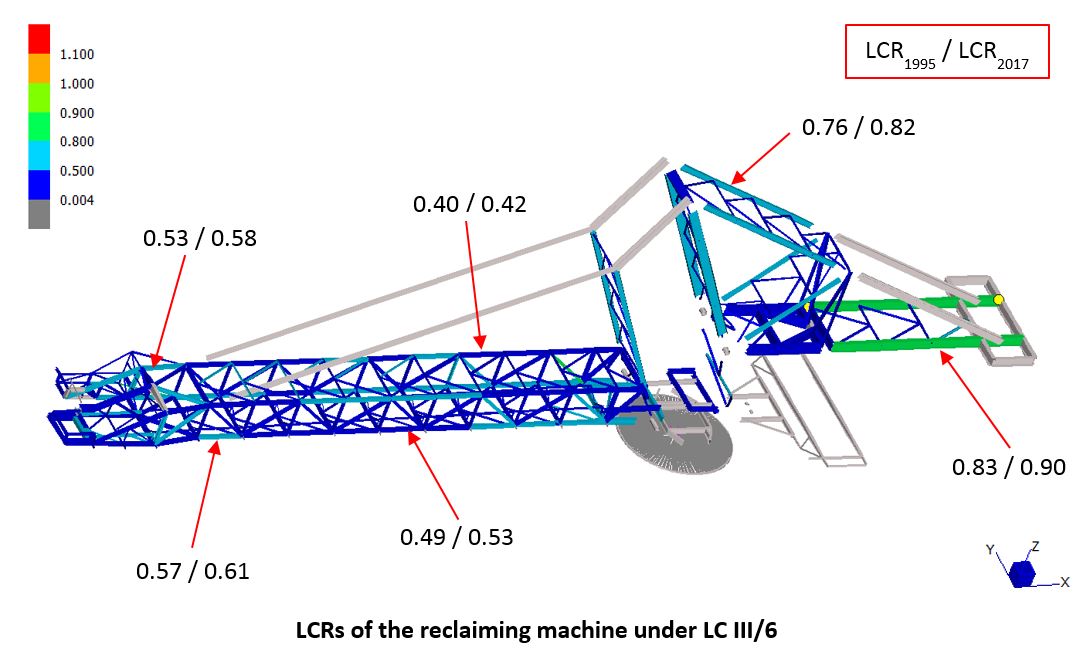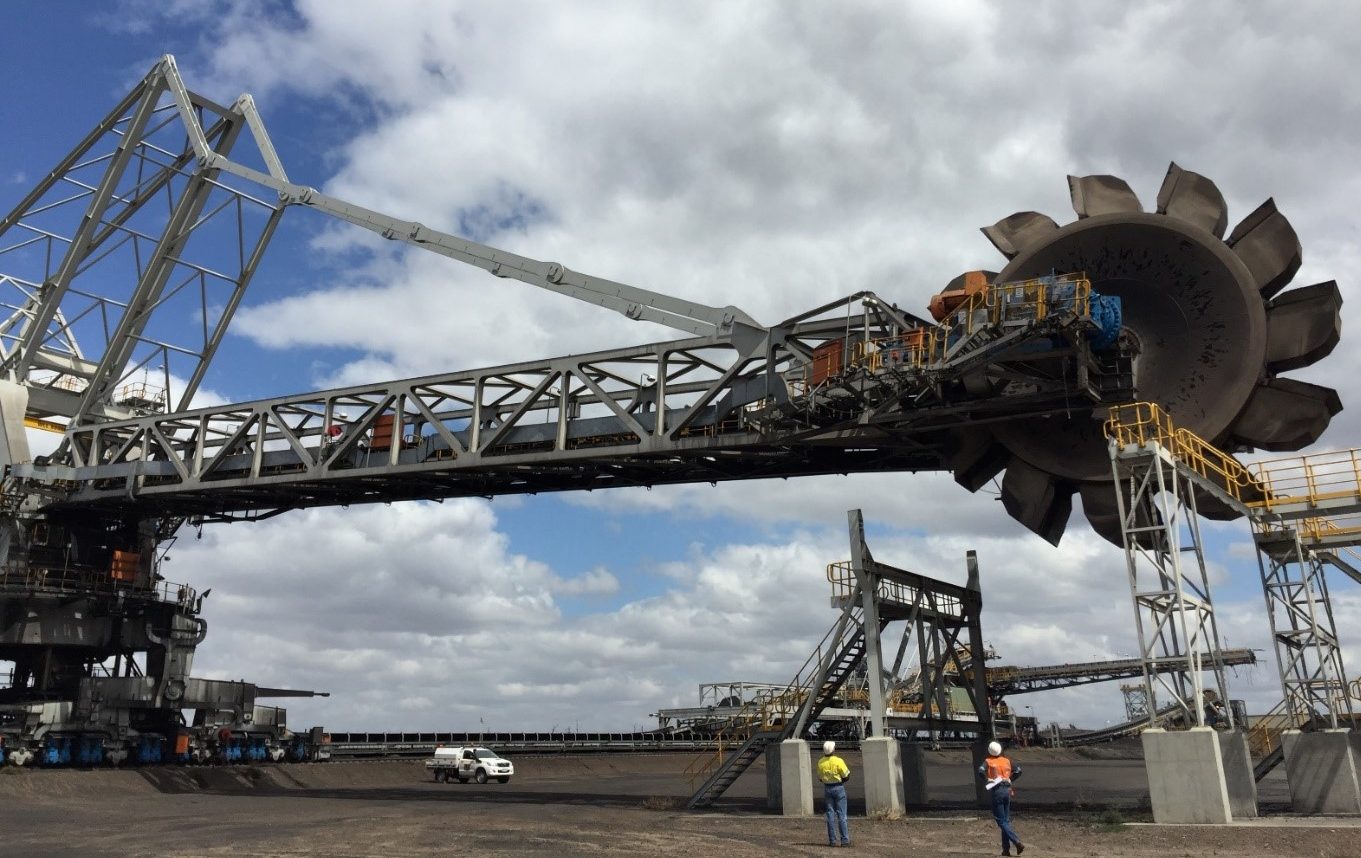The AS4324.1-2017 update introduces partial load factors, aligning machine design with structural standards for associated infrastructure. This blog explores how this change addresses inconsistencies from the 1995 version, and how ASPEC’s comparative analysis on a reclaiming machine reveals minor differences between the two approaches, ensuring consistency and stability across bulk material handling equipment.
The Limit States Method used for structural design (AS 1170.0-2002) adopts the approach of using partial load factors to take into account the level of uncertainties associated with different load types (i.e. 1.2 for Dead Load, 1.5 for Live Load, 1.0 for Ultimate Wind Load etc.). However, the 1995 version of AS 4324.1 used a simplified approach with a single load factor for all load cases in a load combination. This created inconsistencies with the structural design method used for machines being different from the method used for associated structures such as foundations, rail tracks and wharves. This has been corrected in the recently published AS 4324.1-2017 (Table 3.7(B)) which has adopted partial load factors that are consistent with AS 1170.0-2002.
ASPEC has carried out a comparative structural analysis on an existing reclaiming machine, looking at the two methods (1995 version vs 2017 version) to compare the effect of the changes. Results from the two sets were expressed in the form of ‘Load to Capacity Ratio’ (LCR). The figure below shows a comparison of LCRs on selected members (LHS: 1995 version, RHS: 2017 version) for load combination III/6. For example, the numbers (0.83 / 0.90) on the far right hand side mean that the indicated member is using 83% of its strength capacity with the 1995 version whereas the same member is shown to have used 90% of its strength capacity with the 2017 version. In some cases, it was found that not all 2017 LCRs are greater than 1995 LCRs.
The overall conclusion was that the 1995 and 2017 AS 4324.1 methods will only result in minor differences in machine design.

Reference
- Morgan, R., Bird, W., Zhu, F. and Go, G (2017). Investigation of revised AS 4324.1 partial load factors for steel bulk materials handling structures. Australian Journal of Structural Engineering, [online]. Available at: https://doi.org/10.1080/13287982.2017.1396868
